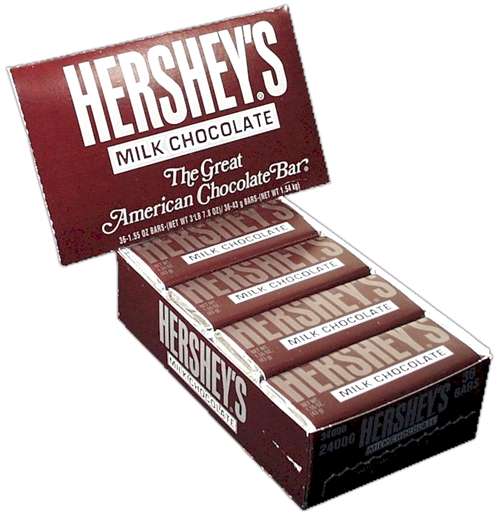
Hershey led the U.S. candy industry in 1997 with sales of $4.3 billion. Its closest rival was Mars, Inc., which owned brands such as M&M’s Chocolate Candies, Snickers, Twix, 3 Musketeers, and Milky Way. In third place was Nestle´ SA, a company based in Switzerland, with brands that included Baby Ruth, Butterfinger, and Crunchbars. The chocolate-covered cookie and wafer category was valued at $155 million that year. Information Resources, Inc., reported that Reese’s Crunchy Cookie Cups had sales of $20 million and controlled 12.9 percent of the category. Reese’s Crunchy Cookie Cups Halloween Candy generated an additional $7 million in sales. Hershey’s Kit Kat brand had sales of $61 million, and Twix had sales of $49.9 million. For the year ended November 8, 1998, all Reese’s products had sales of $108.9 million; Kit Kat had $60.5 million, and Hershey’s Mr. Goodbar had $9.5 million, according to Brandweek. From mid-August 1997 through mid-August 1998 Twix had sales of $70.5 million in grocery stores, drug stores, and mass merchandise outlets.
Advertising Age reported that Mars spent $67.3 million to advertise its products in 1998. Of that amount, $58.9 million went for television commercials and $7.2 million went for print ads. A large percentage of Mars’ marketing budget was used to promote M&M’s, a popular product that came in two styles—chocolate and chocolate-covered peanuts—with multicolored candy coatings. An M&M’s Crispyline extension was launched late in 1998 with a $40 million advertising campaign. During the first half of 1998 Mars spent $11.9 million to promote another popular brand, Twix chocolatecovered wafer, with the tag line ‘‘Two for me, none for you.’’ The print ads and television commercials revolved around the idea that although Twix was sold in packages of two, the product tasted so good that people were not willing to share it. One commercial showed a man who had just been awarded two expensive vehicles in the brand’s ‘‘Double or Nothing’’ instant-win game. As he wondered what he would do with identical Jeep Wranglers, his companion mused, ‘‘Maybe give one to your best friend.’’ Television commercials in the campaign aired during programs for young people, including Buffy the Vampire Slayer and Party of Five. Hershey’s other primary rival, Nestle´ promoted its Butterfinger brand with an advertising campaign that starred cartoon characters from the popular television program The Simpsons. Ads for another crunchy candy, Baby Ruth, used the tag line ‘‘This baby gets you going!’’ to position the brand as a source of energy for active people. In 1997 Nestle´ spent about $5 million on advertising to support the launch of White Crunch, a bar of white chocolate with crisped rice and peanut pieces. Nestle´ also introduced four varieties of a new brand, Treasures, which consisted of milk chocolate shells filled with peanut butter, Butterfinger Bits, the crisped rice used in Crunch bars, or caramel. An advertisement in People magazine featured the headline, ‘‘This would read even better if you were curled up with some Nestle´ Treasures.’’ The tag line ‘‘From you to you’’ suggested that Treasures were a good choice for consumers who wanted to indulge themselves.
Another rival, Russell Stover Candies, launched Russell Stover Peanut Butter & Jelly Cups. Sold two to a package or individually wrapped in large bags, the product consisted of round chocolate shells with a peanut butter filling and either grape jelly or raspberry jam. One advertisement featured the tag line ‘‘Gushing with Flavor’’ in type that looked as if it had been written with purple and red jelly. The text said, ‘‘For the first time
ever, Russell Stover combines the world’s most popular flavors: peanut butter, jelly, and milk chocolate.’’ The ad included a coupon that could be redeemed for 50 cents toward the purchase of the product and another coupon that consumers could redeem for a free sample




